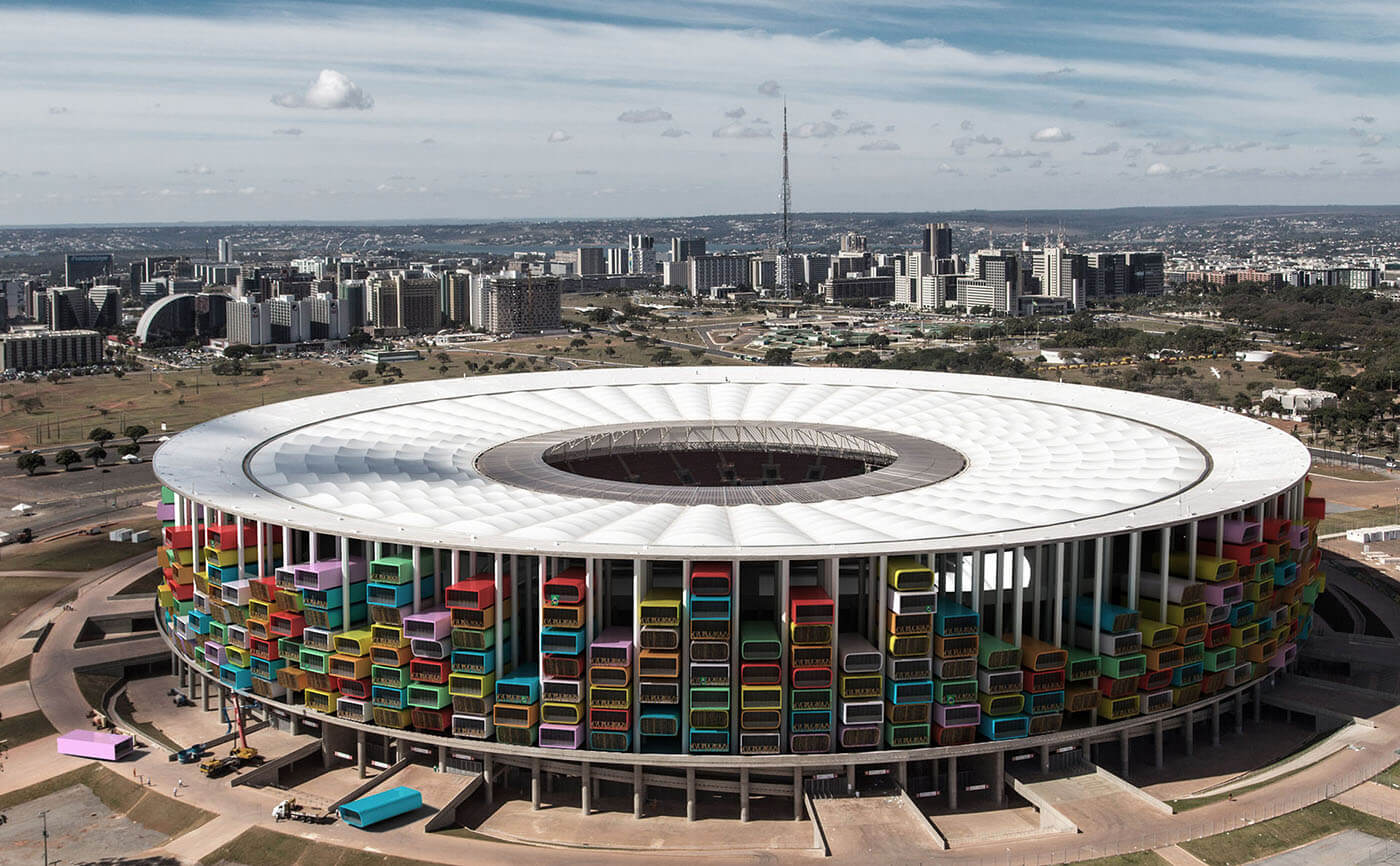Casa Futebol: Living in a World Cup stadium
Stayin’ alive
Appartment instead of upper tier: How about using our unused big stadiums as residential space?
Casa Futebol is a response to the large-scale structures known as “white elephants”.
The project “Casa Futebol” proposes a mixed and sustainable use of the stadiums renovated or built for the 2014 World Cup in Brazil by inserting 105m² housing modules.
Casa Futebol is an architectural response to the white elephants resulting from major sports events like the Fifa World Cup 2014 in Brazil.
The central part of the stadiums (pitch and lower tier) is not affected by the conversion work, neither are match day activities.
Axel de Stampa et Sylvain Macaux insert living space into these stadiums, replacing the upper stands by prefabricated housing. Six stadiums are capable to integrate apartments in their facade: Brazilia, Mineirao, Arena Fonte Nova, Maracana, Arena Castelao and Arena Das Duna.
Five of these six stadiums have been built with concrete or metal columns patterns with a 7 or 8 metres span.
About 1,500 to 2,000 people could live in each stadium.
There are approximately 315 residential units covering the exterior facade and 315 indoor units for the Brasilia National Stadium.
About 1,500 to 2,000 people could live in each stadium, in total about 20,000.
Project data
Photographer
Tomás Faquini
Jobson Galdino
Populous/copa2014.gov.br.jpg
EFE






